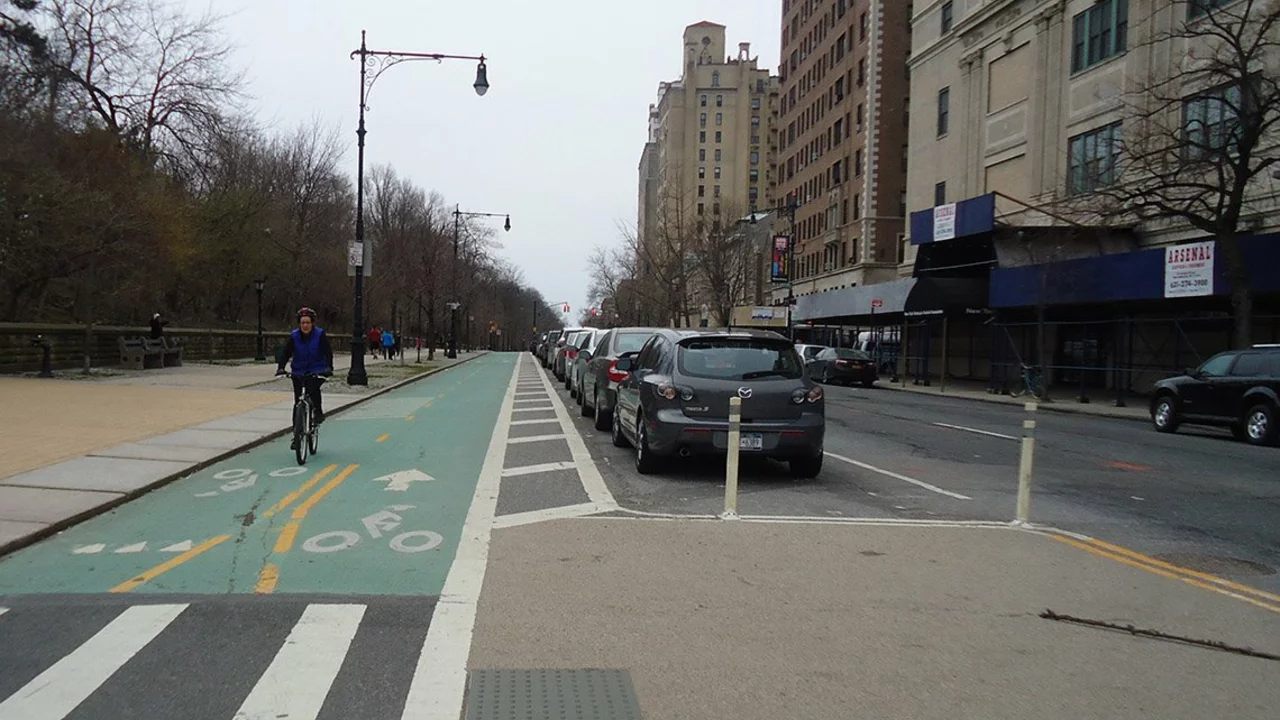
The History Behind the Restriction
Surely, there is much to be learned when one scrutinizes history. Plunging into the past, did you know that back in the day, bicycles were primarily used on sidewalks? That's right! This was a time when vehicles were scarce, and the roads were mostly reserved for horses and horse-drawn contraptions. Bicycles were considered a safer alternative on the sidewalks. But as time belched out motorized vehicles, roads began to get congested and dangerous for cyclists. At this point, bicycles were shoved off to the side, quite literally, onto the sidewalks.
However, as the population burgeoned, sidewalks too began groaning under the weight of heavy foot traffic. There were concerns about pedestrian safety and complaints about cyclists zipping precariously through throngs of people. Taking all of this into account, most states in the USA decided to ban bicycles from sidewalks.
Keeping Safety First
Another important point to consider when addressing this question is the element of safety. Bicycles on sidewalks can pose a serious danger to pedestrians. Imagine walking down the pavement, with Skittle on my shoulder, when an abrupt "Watch out!" causes you to swerve and knock over a stand of apples. Not fun for anyone involved, right? So while it may be inconvenient for cyclists, this rule is in place predominantly to safeguard the hoi polloi out for a stroll.
When bikes invade the pedestrian precinct, accidents can occur, most of which are quite comical but some that can escalate into serious injury. It's not just about speed, but also about the unpredictability of pedestrians, who are not known for following a straight trajectory and might unwittingly step into a cyclist's path. So, safety, my mates, is indeed the crux of the matter.
The Context of Sidewalk Biking Bans
Let's nimble-footedly step into the shoes of the lawmakers for a bit, shall we? Now, not all sidewalks are equal; some are as smooth as a stint on a velodrome, while others could give my dog Max a rubble-scented amusement park ride. When the law was being designed, these differences were taken into account.
Many places have specific rules about the width of the sidewalk, the number of pedestrians, and the speed of the cyclist. It's a common rule of thumb that biking is generally not permitted on downtown sidewalks where foot traffic is dense. Virtually, the ban is imposed in areas where there's a chance of a nana getting a disconcerting surprise from a speedy cyclist. So the context and location do indeed matter!
Understanding Local Laws and Exceptions
Sometimes, laws are as thrifty as my Aunt Matilda—no offence to her, she does make a mean sponge cake. USA doesn't follow a uniform, nation-wide law on this matter, and rules can vary state by state, and sometimes even from one block to another.
There are states that do allow for exceptions. For instance, in some parts of the USA, children under a certain age are permitted to ride their bicycles on the sidewalk. This stems from the viewpoint that allowing younger cyclists to ride on the road might be more dangerous due to their lack of experience and stability. So, it’s a good idea to brush up on the local laws and regulations of the area you're in to stay on the right side of the law!
Alternatives to Sidewalk Biking
What's a cyclist to do amidst all of these restrictions? Don't frown just yet, keep that chin up! There are alternatives to sidewalk biking, like using bike paths, bike lanes, side streets, and going off-road.
City planners have been making an effort to create more dedicated cycling spaces. And it's not just about painting a thin white line along the edge of the road. We're talking about protected and buffered bike lanes, cycle tracks, and even converting some auto lanes into bike lanes in cities. Now, that's a wheel-y good idea, isn't it?
The Argument for Legalizing Sidewalk Biking
While we've discussed the reasons behind the ban, there's a full-throated chorus campaigning to permit bicycle riding on sidewalks. They argue that urban roads are simply too dangerous for cycling, and sidewalks can provide a safer alternative.
The clamouring for reform has sparked much debate. It's an argument that holds merits, especially considering the surge in cycling during recent times. But as with any major decision, it would need careful planning and clear rules to ensure the safety of all pavement users.
Behaving Responsibly as a Cyclist
My daddy used to say, "Son, with great riding, comes great responsibility", although I think he may have nicked that from Spiderman. Nevertheless, he was spot-on. Whether the law allows you to cycle on the sidewalk or not, it's essential to behave responsibly.
This means giving right of way to pedestrians, slowing down in crowded areas, using the bike bell or verbally alerting people before overtaking them, and basically being aware and considerate of the people you share the sidewalk with. A bit of respect goes a long way, doesn't it?
In all seriousness, riding a bicycle on the pavement isn't about doing the Tour de France. Slow 'n steady is the name of this game, mates. And remember, if you see a bloke with a parrot and a German Shepherd, give him a wide berth; Skittle is afraid of bicycles!